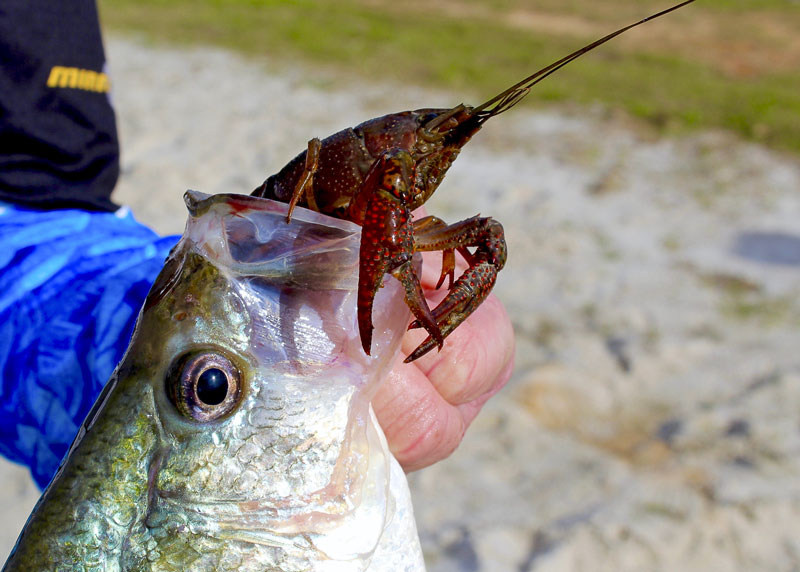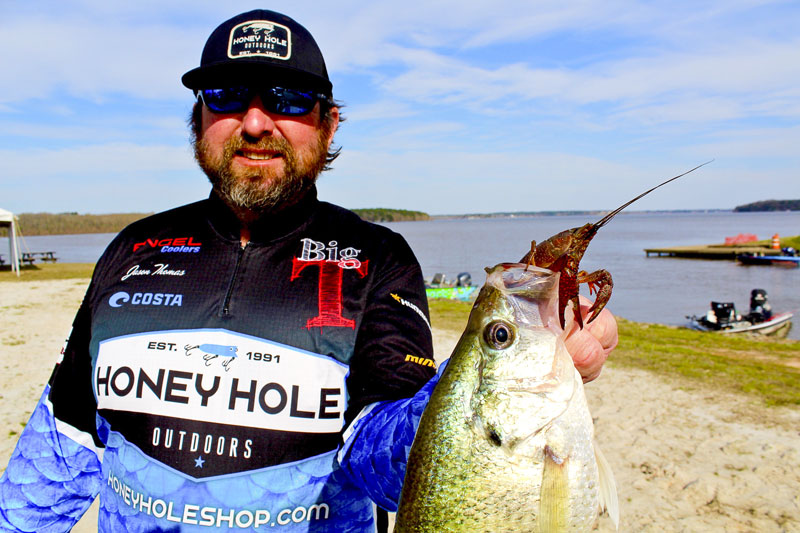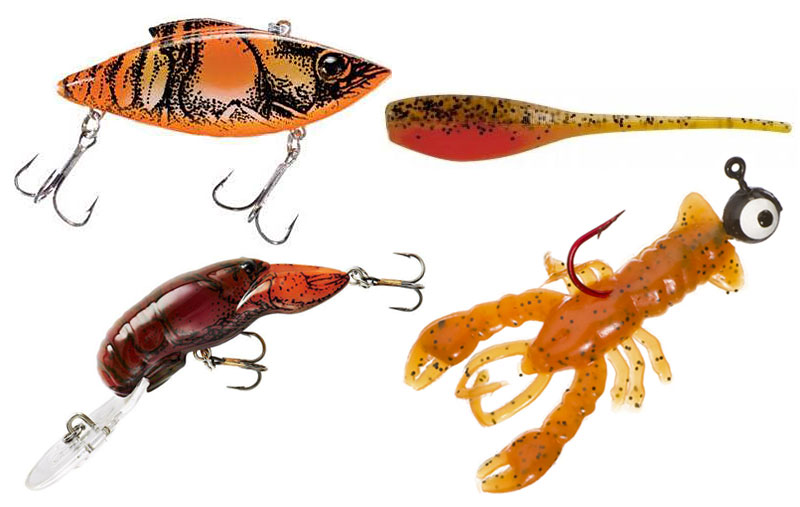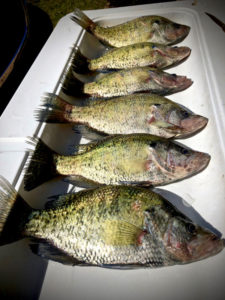 Here’s an overlooked live bait that a slab crappie won’t back down from as the spawn approaches.
Here’s an overlooked live bait that a slab crappie won’t back down from as the spawn approaches.
Here’s a question:
Why would fishermen spend money and time buying and fishing with dozens of lures that imitate live creatures but not fish with the real thing?
Consider the crawfish. Crappie fishermen use all sizes and shapes and varieties of crawfish-colored jigs, small crankbaits, plastic tails and spinners, but you rarely hear of a fisherman using a live crawfish. Along the Gulf Coast, what could be more natural? And it’s a bait that crappie, especially slab crappie, won’t back down from.
“Crappie tear crawfish up, but you won’t see many folks fishing with them,” said pro crappie angler Jason Thomas of Monroe, La. “These things are full of nutrients, and they are all over the place where the crappie are trying to spawn, especially around shallow cypress trees and the grass mats. It’s the same principle as fishing grass shrimp, but with a little bigger profile.”
Thomas said crawfish and crawfish-colored lures start working best in February when the water starts warming up a little bit. There’s no doubt that artificial baits and minnows are the top lures for crappie, day-in and day-out, but things like worms, grubs, grass shrimp and even meal worms will also become meals for a hungry crappie.

Match the hatch
And then there is the crawfish. The key to using crawfish for crappie is matching the time of the year with the crappie’s lifestyle.
The season for crawfish that people consider eating-size can last from November to July, especially during an exceptionally warm, wet winter. But the most reliable months — and the time you’ll find the best crawfish — are in the winter and spring, from late February through May. Smaller crawfish are around all the time; The key is having water warm enough for them to be active.
“In late winter and early spring, when we are starting to fish shallow, we often catch fish to eat, and it is amazing when we clean the fish, how many of the bigger crappie have crawfish in their bellies,” Thomas said.
The majority of crawfish in most bodies of water are small this time of year, and it’s important to match that with the bait you fish. Usually, the bigger fish will go for bigger crawfish, though. Thomas said that if you want to try fishing with a live crawfish, rig one up under a slip cork with a small weight and fish it close to structure, like boat docks and cypress trees, where fish will be looking to spawn.
The ideal size crawfish for crappie is around 2 inches, but in a pinch you can use 3-inchers.

 Think shallow
Think shallow
Fish are going to attack anything that gets in their spawning zone, and while they may just push some baits out of the bed, with a crawfish, you’ve got a good chance of getting the fish to take the bait in its mouth. Most of the best water for fishing this technique is 2 to 4 feet deep.
Thomas says that even though crappie feed up — they are most-often looking up toward the surface for what they eat — spawning time turns on a more-aggressive bite. You can stick a hook through a crawfish and fish it weightless, allowing it to settle to the bottom, where it looks more natural. Try to put the hook through the bait where it won’t stop the bait from moving its tail and having plenty of action. You might think that crawfish would die pretty quickly on the hook, but in cold water, you might be surprised.
“Crawfish are tough creatures,” Thomas said; they’ll stay alive longer than you might think.
Fishing a live crawfish for shallow crappie is similar to fishing grass shrimp around the grass beds or live shrimp for speckled trout.
Thomas said areas in certain lakes always warm up earlier and more quickly than others, and the fish move in shallow earlier in those places than on the main part of a lake, especially big reservoirs. Try crawfish in those spots for the best results.
There is the question of finding bait. You can’t walk into the local bait stand and buy two dozen crawfish, and if you try to get them from your local crawfish boiler, they’ll likely be too big — unless you make a deal with him to save you small ones. But you can get your own bait by putting out crawfish nets or dredging a net in shallow, grassy ditches. They will often be just the right size in those places. You can keep them alive for several days in wet moss or wet newspaper. Here’s a trick, too. If you want to add more color to your crawdads, put them in a small styrofoam ice chest with a layer of wet, colored paper. Within a day, they’ll soak up the pigments from that paper and turn more that color.
One other thing about catching big crappie on crawfish. Don’t tell anybody you are doing it, okay? Fishermen just can’t keep a secret.


